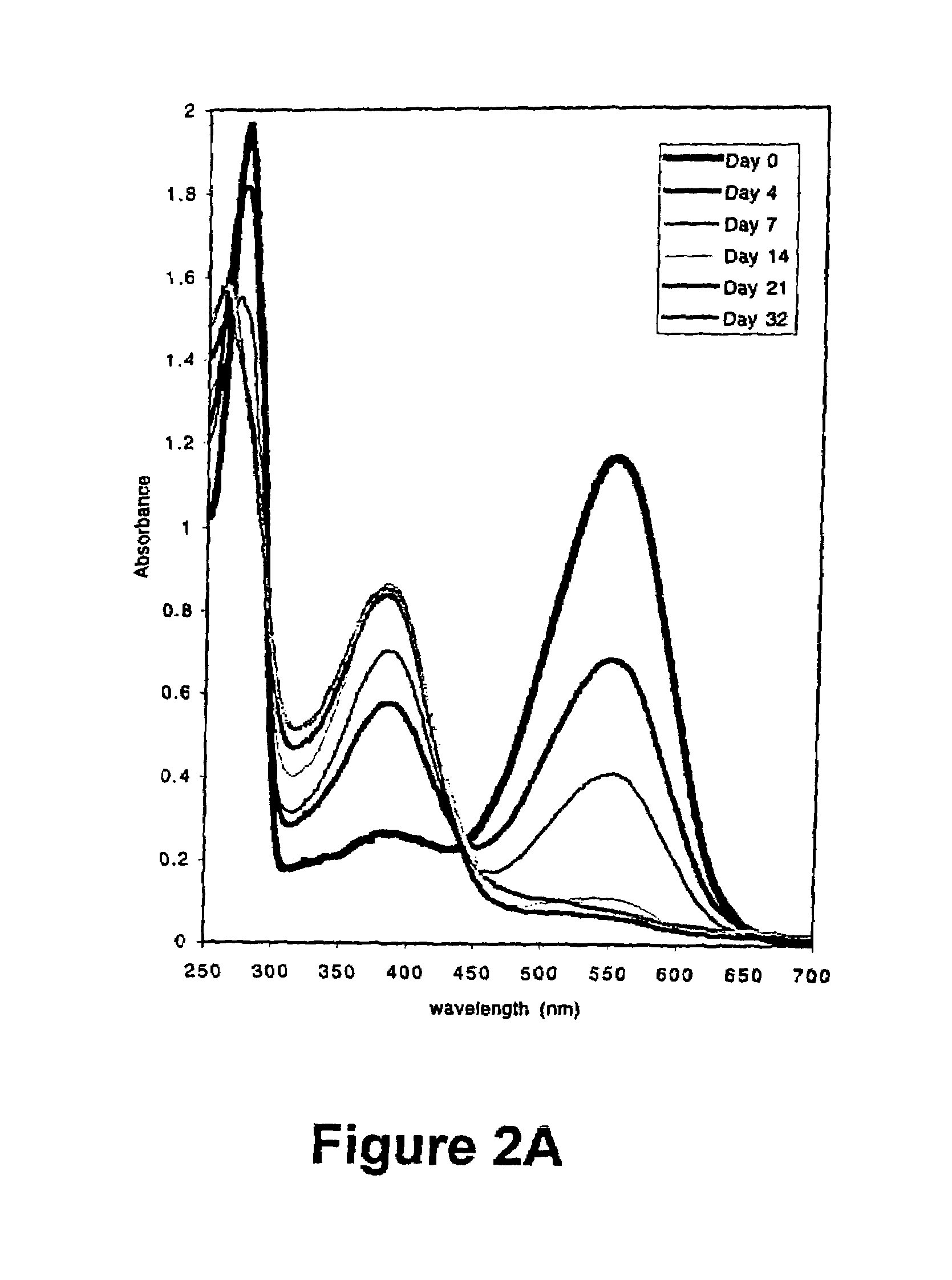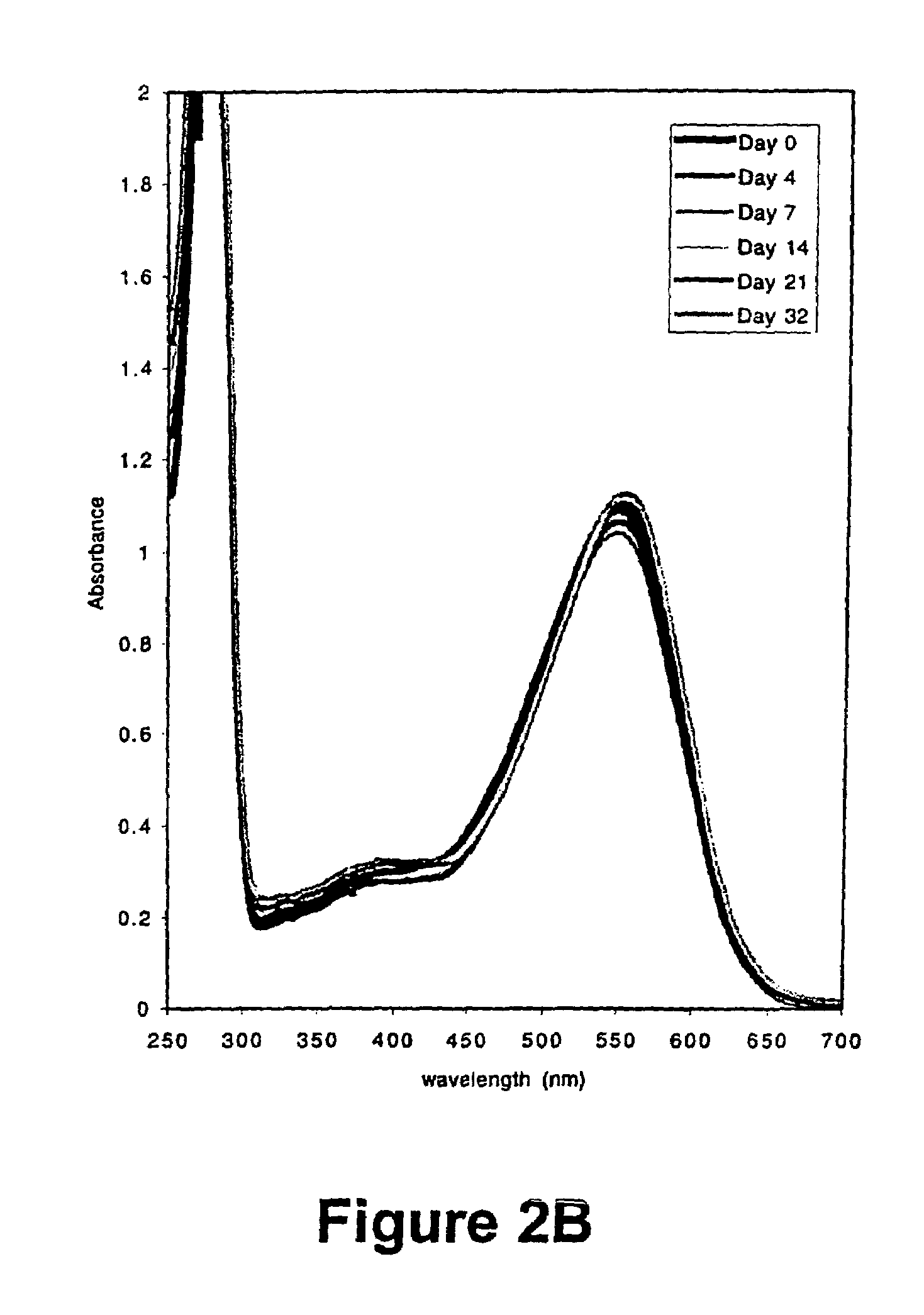Peptide conjugates for the stabilization of membrane proteins and interactions with biological membranes
a technology of membrane proteins and conjugates, applied in the field of compounds, can solve the problems of poor pdc surface properties, unfavorable effect lessened, and only poorly understood class of molecules at a structural level
- Summary
- Abstract
- Description
- Claims
- Application Information
AI Technical Summary
Benefits of technology
Problems solved by technology
Method used
Image
Examples
example 1
Synthesis of LPD-16
[0048]The lipopeptide, LPD-16, exemplifies a lipopeptide detergent in accordance with the present invention. The scaffold peptide of LPD-16 has the following chemical structure:
CH3CONH-AOAEAAEKAAKYAAEAAEKAAKAOA-CONH2
wherein A is alanine, 0 is ornithine, E is glutamate, K is lysine, and Y is tyrosine, CH3CONH- is the acetylated amino terminal group of the peptide, and -CONH2 is the carboxamide end of the peptide chain. A single tyrosine is included to allow spectrophotometric detection of the peptide at 280 nm.
[0049]LPD-16 is synthesized on a solid support resin using a combination of Boc and Fmoc chemistries. The synthesis proceeds from the C-terminus of the peptide to the N-terminus, with all the main chain peptide synthesis couplings based on Fmoc chemistry. The resin tert-butoxycarbonyl-Alanine-methylbenzhydrylamine (Boc-Ala-MBHA) is chosen so as to produce a peptide carboxamide upon cleavage from the resin. The resin is first prepared by removal of the Boc pro...
example 2
Effectiveness of Lipopeptides in Stabililizing Solubilized Membrane Proteins
[0052]The membrane protein bacteriorhodopsin was purifed from Halobacterium salinarium (gift of J. Lanyi, Univerity of California, Riverside) as follows. The bacteria were grown in 5 ml Standard Growth Medium (4.28 M sodium chloride, 81.1 mM magnesium sulfate heptahydrate, 10.2 mM sodium citrate, 26.8 mM potassium chloride, 10 g / L bacteriological peptone (Oxoid), 1.36 μM calcium chloride, 27.5 μM zinc sulfate heptahydrate, 12 μM manganese sulfate, 12 μM ferrous ammonium sulfate hexahydrate, 3.36 μM cupric sulfate pentahydrate, pH 7.0) with 1 mg / mL novobiocin with shaking for 5 days at 40° C. 3 mL of this culture were used to innoculate 300 mL standard growth medium with 1 mg / mL novobiocin, and the culture was grown for another three days at 40° C. with shaking. 16 mL of this culture was used to inoculate 800 mL of Standard Growth Media without novobiocin, and grown for 10 days at 40° C. with shaking. The cel...
example 3
Interaction of Lipopeptide Detergents with Phospholipid Membranes
[0058]Phosphatidyl choline (PC) vesicles (liposomes) were prepared by extrusion through 0.1 nm pore membranes (Avestin, Ottawa), at 1 mM concentration in 10 mM N-[2-hydroxyethyl]piperazine-N′-[4-butanesulfonic acid (HEPES), 200 mM NaCl, pH 7.2, and diluted to 0.1 mM phospholipid in the same buffer. Dodecyl maltoside (DDM), C-0 peptide, or lipopeptide detergent in the same buffer were added to the indicated concentrations and the solutions were stored at room temperature for 24 hours. The hydrodynamic radius (Rh) and polydispersity of the solutions were measured on a DynaPro-800 dynamic light scattering device (Protein Solutions Inc., Charlottesville, Va.). Estimates on the error on the Rh values were taken as the polydispersity, as recommended by the manfacturer. Samples of DDM, C-0 peptide and LPD in the absence of PC liposomes were also analyzed.
[0059]The results of this experiment are illustrated in FIG. 3. The hist...
PUM
| Property | Measurement | Unit |
|---|---|---|
| length | aaaaa | aaaaa |
| pore size | aaaaa | aaaaa |
| particle size | aaaaa | aaaaa |
Abstract
Description
Claims
Application Information
 Login to View More
Login to View More - R&D
- Intellectual Property
- Life Sciences
- Materials
- Tech Scout
- Unparalleled Data Quality
- Higher Quality Content
- 60% Fewer Hallucinations
Browse by: Latest US Patents, China's latest patents, Technical Efficacy Thesaurus, Application Domain, Technology Topic, Popular Technical Reports.
© 2025 PatSnap. All rights reserved.Legal|Privacy policy|Modern Slavery Act Transparency Statement|Sitemap|About US| Contact US: help@patsnap.com



